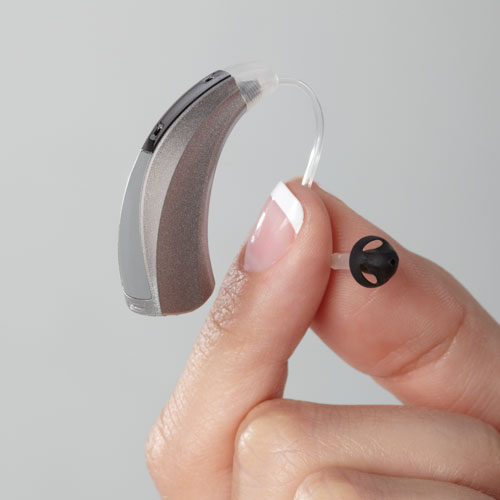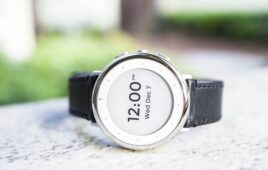Thanks to innovators like the late Steve Jobs, the look and feel of a design is just as important as the technology behind it. Take hearing aids, for example. Most people who need them refuse to wear them because they have a functional appearance that, to the users, implies a defect. The common thought about hearing aids is that “they are for old people.”
Eric Olson, Director of Design at product innovation consultancy Karten Design, explored a new approach for the look of hearing aids with Starkey Laboratories, which develops high-tech hearing aid technology. Together, the two are introducing a line of hearing aids that transcend common stereotypes.

“One of the things we learned,” noted Olson, “is that users have a negative perception of hearing aids. There is still a lot of stigma attached to wearing one. There are more than 35 million people in North America with hearing loss, but only 25% of them wear hearing aids. Despite the amazing technology inside the device, people don’t want to be reminded of their age and don’t want others to know they have a hearing problem.”
Karten Design was tasked with matching Starkey’s advanced technology with an appealing exterior. The hearing aids needed to be “beautiful in the hand and invisible behind the ear.” The design team handled the first requirement with ease, introducing a stylish form language with complex surfacing.
The curved spine of the S Series features capacitive controls – much like an iPhone touch screen. Users only need a quick swipe of the finger to adjust the device – a much less conspicuous gesture than the fiddling with tiny dials or push buttons.

Making an attractive form visually inconspicuous at the same time presented more of a design challenge, Olson says. The flesh-toned plastic of traditional hearing aids was never quite convincing as skin; older designs arguably advertise hearing loss more than concealing it. Karten Design’s approach was not to match skin tone but instead attempt a sort of camouflage.
“We did a study into what colors and what types of finishes blend the best with hair and skin. We narrowed the options down to several multi-tone metallic finishes, which would pick up the naturally occurring highlights in hair and complement skin tone.”
Karten Design went about its color study digitally. The team started with standard plastic finishes that came pre-mixed in Luxion KeyShot. Designers then tweaked its mix levels to produce a narrow spectrum of custom finish options.
“We did a lot in tuning and retuning of those finishes, making tiny variances in gloss levels or adding metallic flake,” says Olson. “We showed the client a series of renderings of the entire design, each with subtle changes in tone from part to part, which gives the piece an illusion of depth to further mask its appearance.
“It was definitely an unusual exploration of color options. We were tinkering with 17 different colors of silver, three of which are all applied to the model at the same time.”
Automotive styling one-inch high
“This was also the team’s first project using KeyShot, which was well suited to our needs. It was sort of ironic we had just adopted this powerful rendering program, and for our first job we’re using it very intensively on a piece of plastic less than one inch high. We got the sense the software was set up to handle something the size of a car and here we are using it for something the size of a nickel,” says Olsen.
“But just because our hearing aids are small does not mean they were simple. Our automotive-inspired design language introduced taut, precise surfaces and a smooth, sculpted profile. They’re really tailored with a level of detail befitting a product of a much larger scale.”
Automotive-style rendering came in handy not just on constructing finish palettes, but also when assessing the feasibility of manufacture.
“For something this small, we have to tune the tooling for the plastic parts to accommodate even the clear coat and undercoat, because we’re dealing with gaps down to a fraction of a millimeter,” Olson says.
“You can use the rendering process to truly evaluate surfaces and tune surfacing down to this level of precision. In our discussions with engineers, we were able to reference high-resolution images, showing them exactly the kind of detail we needed both in the tooling and the finish.”
For the millions of hearing impaired people, S Series has transformed a stigmatized experience. Hearing aid customers can look at their purchase the same way they would a pair of eyeglass frames.
In every day use, observers might not even notice a device behind the ear at all. And if they do, they might suspect it’s some sort of high-end headset, phone accessory, or other cool digital gadget. Users who are still young at heart will want to keep them guessing.
KeyShot
www.keyshot.com
Karten Design
www.kartendesign.com




